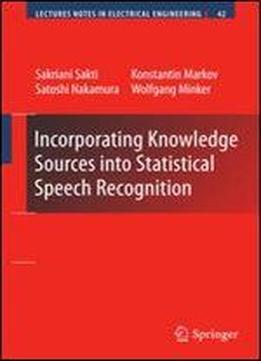
Incorporating Knowledge Sources Into Statistical Speech Recognition (lecture Notes In Electrical Engineering)
by Sakriani Sakti /
2009 / English / PDF
5 MB Download
Incorporating Knowledge Sources into Statistical Speech Recognition addresses the problem of developing efficient automatic speech recognition (ASR) systems, which maintain a balance between utilizing a wide knowledge of speech variability, while keeping the training / recognition effort feasible and improving speech recognition performance. The book provides an efficient general framework to incorporate additional knowledge sources into state-of-the-art statistical ASR systems. It can be applied to many existing ASR problems with their respective model-based likelihood functions in flexible waysIncorporating Knowledge Sources into Statistical Speech Recognition offers solutions for enhancing the robustness of a statistical automatic speech recognition (ASR) system by incorporating various additional knowledge sources while keeping the training and recognition effort feasible.
The authors provide an efficient general framework for incorporating knowledge sources into state-of-the-art statistical ASR systems. This framework, which is called GFIKS (graphical framework to incorporate additional knowledge sources), was designed by utilizing the concept of the Bayesian network (BN) framework. This framework allows probabilistic relationships among different information sources to be learned, various kinds of knowledge sources to be incorporated, and a probabilistic function of the model to be formulated.
Incorporating Knowledge Sources into Statistical Speech Recognition demonstrates how the statistical speech recognition system may incorporate additional information sources by utilizing GFIKS at different levels of ASR. The incorporation of various knowledge sources, including background noises, accent, gender and wide phonetic knowledge information, in modeling is discussed theoretically and analyzed experimentally.











